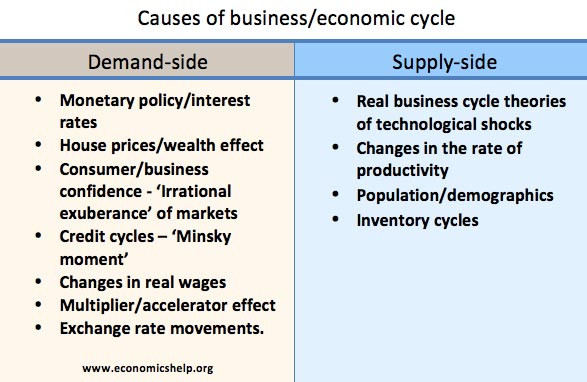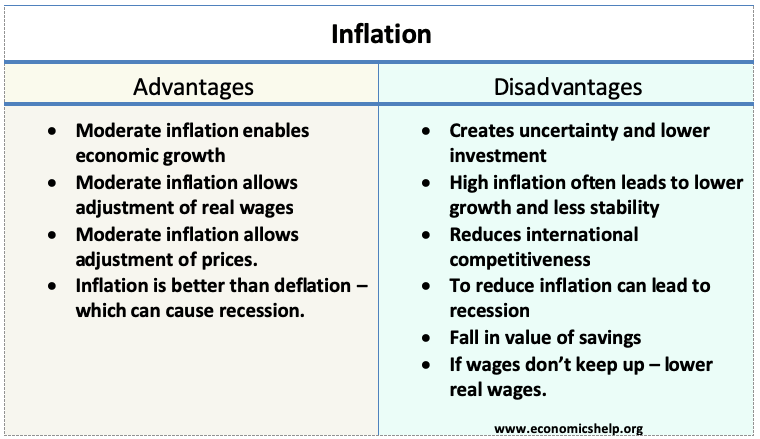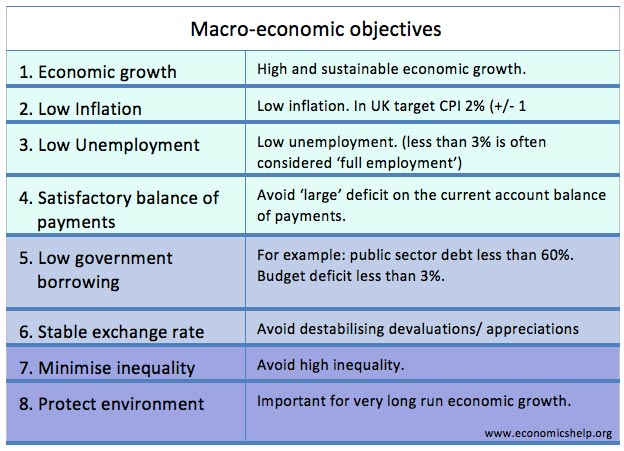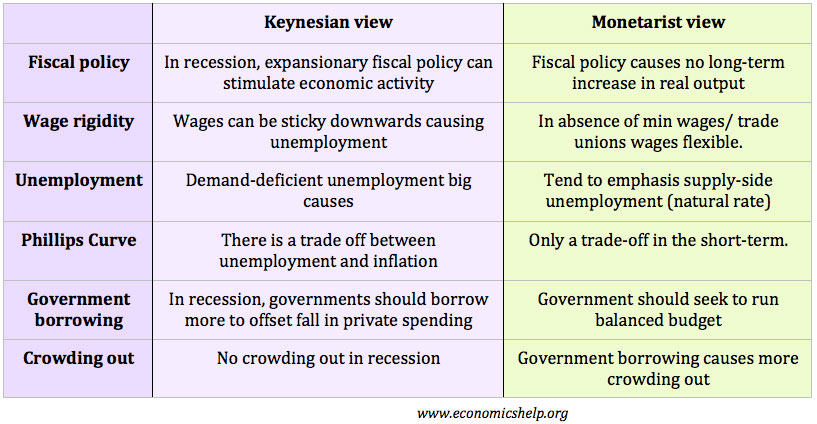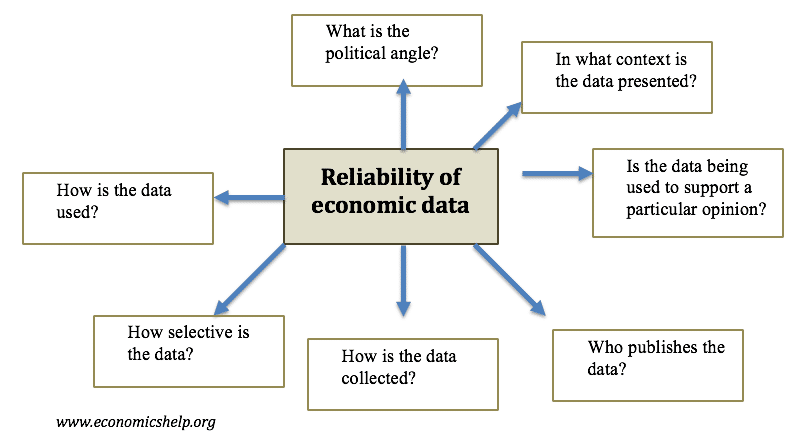Causes of business cycle
The business or trade cycle relates to the volatility of economic growth, and the different periods the economy goes through (e.g. boom and bust). There are many different factors that cause the economic cycle – such as interest rates, confidence, the credit cycle and the multiplier effect. Some economists also point to supply side explanations, …

